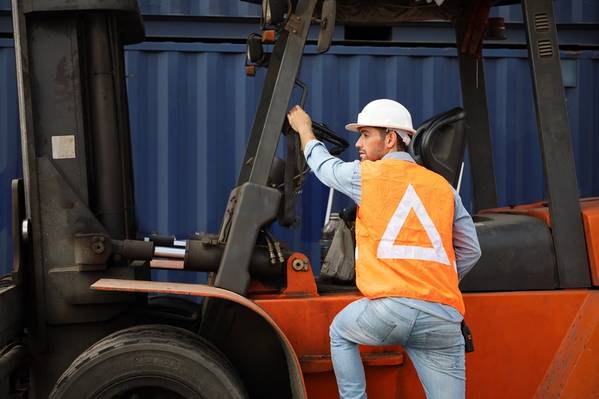
Keep crews safe and productive with these important reminders
Forklifts are one of the many the workhorses of a facility or loading dock. They bring countless benefits to operations but can introduce numerous hazards, too. Fortunately, the hazards posed by forklifts can be mitigated. In fact, studies show that roughly 70 percent of all forklift-related accidents could have been avoided with proper training. Ongoing safety reminders and meetings are one simple way to keep crews informed, proactive, and safe.
Beyond general forklift safety knowledge, it’s important for operators to be aware of fuel-specific practices, depending on the energy source used to power their equipment.
Propane is a leader in the material handling market, with 90 percent of Class 4 and 5 forklifts being powered by propane, according to the Propane Education & Research Council (PERC). Because of this, it’s important for crews across the country to be well-versed in proper propane safety practices. Here, PERC answers some of the most frequently asked questions about propane safety.
Q: Is propane a safe energy source?
A: Propane is an ideal fuel for material handling. It’s a non-poisonous, non-toxic energy source, making it safe to use. Propane tanks are 20 times more puncture resistant than tanks filled with ethanol, methanol, or gasoline. If a fuel tank is damaged, it can cause emergencies like leaks, hazmat situations, fire issues, or damage to the equipment. Propane has the lowest flammability rating of any alternative fuel, which reduces the likelihood that propane will ignite unintentionally in the event of a leak.
Q: How safe it is to refuel propane forklifts?
A: Refueling a propane forklift is both safe and quick. It’s as simple as swapping out one empty cylinder for full one. When handling cylinders, make sure to wear protective gloves and keep ignition sources away from the cylinder and refueling area. Be sure to handle cylinders carefully, making sure not to drop, throw, or drag them, and use proper lifting techniques when transporting cylinders. For storage, make sure propane cylinders are kept in a secure rack or cage, located away from building exits, entryways, stairways, and high-traffic areas.
Q: What specific safety measures need to be taken when operating propane-powered equipment?
A: Always be sure to inspect propane cylinders before operating the equipment. Cylinders need to be checked for rusting, dents, gouges, and leaks. Cylinders that show signs of wear or leaks shouldn’t be used and may need to be replaced, even if within the cylinder’s requalification date. Operators should check that the pressure relieve valve is clean, unrestricted, set to the 12 o’clock position, and directed upward at a 45-degree angle when the cylinder is mounted horizontally. Also, make sure to close the service valves on cylinders when not in use. This helps prevent potential injury around internal combustion engines and unintended fuel loss.
Q: What other safety resources are available to ports operating propane equipment?
A: The only thing more important than keeping employees productive is keeping them safe. And choosing propane can help you do that because you get the additional support of a local propane supplier. Propane suppliers have hours of safety training and can teach your crew safe handling practices and how to properly connect a cylinder to a forklift. With the supplier’s help, your crew will be safety pros in no time.
Here’s how it could work for your operation:
• Cylinders: Suppliers inspect cylinders each time they’re exchanged or refilled and remove damaged cylinders from service. It’s also a chance for suppliers to inspect and repair valves and worn O-rings on the cylinders as needed. Your supplier will help you identify locations for your cylinder cages or fuel dispensers, so they don’t interfere with workflow.
• Refueling: Your propane supplier’s priority is making sure your entire team understands how to safely handle, refuel, and install propane cylinders on their forklifts. When you choose to use propane forklifts, you can also opt for a cylinder exchange program, where your propane supplier conveniently refills the cylinders for you.
• Training: Some propane suppliers offer additional safety training opportunities for forklift customers.
Q: Are there safety resources available if I have questions?
A: Propane.com is home to a collection of free safety resources including a toolkit for safety directors and a downloadable safety poster. Additionally, there are short videos for material handling professionals to watch emphasizing important safety protocols for those working with or around propane forklifts.
Establishing ongoing safety briefings is a great way to keep employees informed throughout the year, share valuable seasonal safety reminders, and address any questions or concerns they may have.
To learn more about forklift safety, visit Propane.com/SafetyFirst.
Joe Calhoun is director of off-road business development for the Propane Education & Research Council. He can be reached at [email protected].


